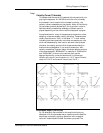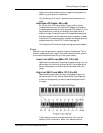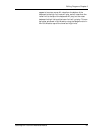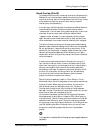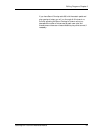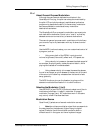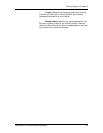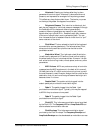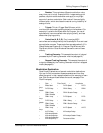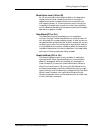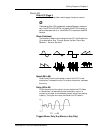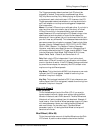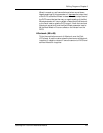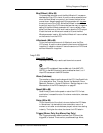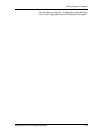
Editing Programs: Chapter 6
QuadraSynth Plus Piano Reference Manual 96
• Random This provides a different modulation value
every time you hit a key. Example: With vintage analog synth
patches, use pitch as the destination and apply a very slight
amount of random modulation. Each note will have a slightly
different pitch, which simulates the natural tuning instability of
analog circuits.
• Trigrate This is a Trigger Rate Follower, which
monitors how fast notes are being played on the keyboard. For
example, if routed to the Effect send of a Program, you could
automatically have more effect when playing slowly, and less
effect when playing quickly.
• Controllers (A, B, C, D) Four incoming MIDI
controllers can be recognized by the QuadraSynth Plus and used
as modulation sources. These controllers are assigned as A–D in
Global Mode (see Chapter 8). In Program Play Mode and Mix
Play Mode, the four Quad Knobs can be used to control these
directly.
• Tracking Generator This accepts the output of a signal
processed by the Tracking Generator module (see page 81).
• Stepped Tracking Generator This accepts the output of
a signal processed by the Tracking Generator module in stepped
mode (see page 81).
Modulation Destination
Quad Knob [2] selects one of several modulation destinations.
You can find out more about these parameters and how they
affect the sound in their respective sections (for example, to learn
how Pitch Envelope Attack affects the sound, see page 72 on
Pitch Envelopes).
• Pitch • Filter Cutoff • Amplitude
• Effect Send • PLFO Speed • PLFO
Amp
• PLFO Delay • PENV Delay • PENV
Attack
• PENV Decay • PENV Sustain Decay •
PENV Release
• PENV Amp • FLFO Speed • FLFO
Amp
• FLFO Delay • FENV Delay • FENV
Attack
• FENV Decay • FENV Sustain Decay •
FENV Release
• FENV Amp • ALFO Speed • ALFO
Amp
• ALFO Delay • AEnvelope Delay •
AEnvelope Attack
• AEnvelope Decay• AEnvelope Sustain Decay •
AEnvelope Release
• AEnvelope Amp • Portamento Rate



